Ancient Near East (Mesopotamia)
Battle of the Gods
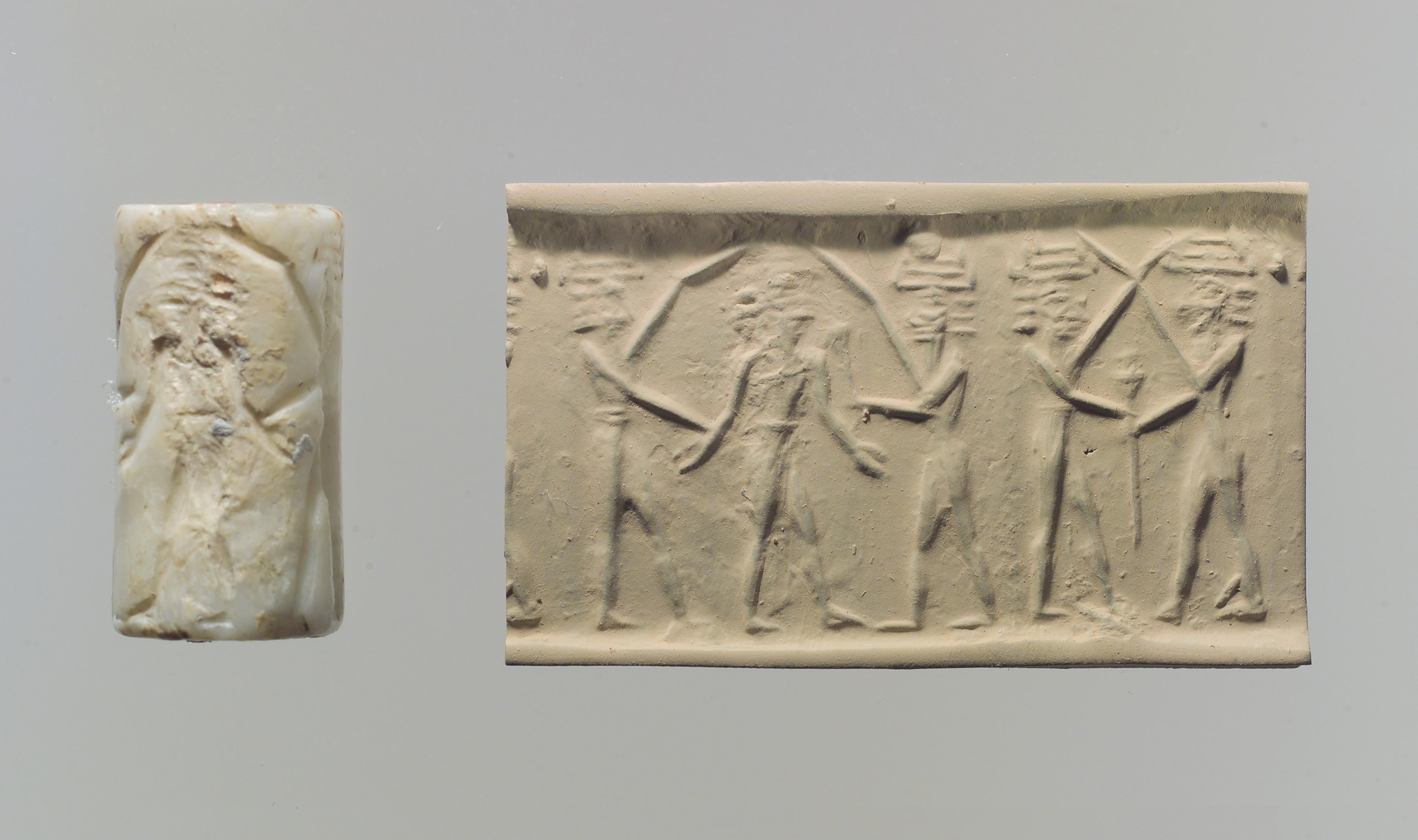
- Date: 2350-2150 BCE.
- Place of origin: Surkh Dum, Iran.
- Detailed Description: The piece depicts two groups of fighting gods in horned headdresses.
- Historical Value: The piece of art is an example of the clay impression technique. The image was pressed into clay using carved cylinders. At the time, the technique allowed for the creation of more complex artifacts.
The theme of the impression is clearly militant in nature. The attackers in the group to the left hold their victim by hands and by the headdress. This can be considered a basic depiction of military tactics. The gods encircle their enemy to gain an advantage. The fact that all gods reach for headdresses indicates a presence of a military ritual. Weapons are featured prominently in the scene. Horned headdresses are associated with aggression.
Statue of Gudea
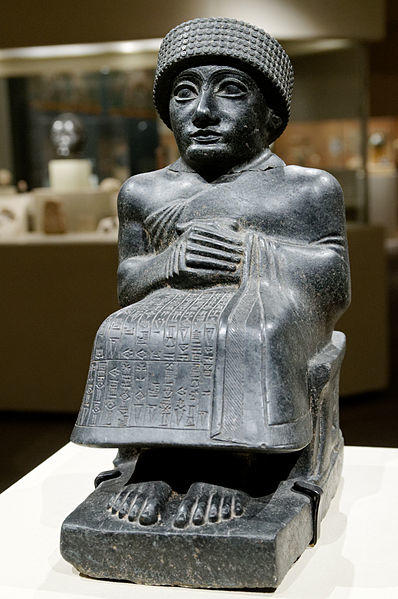
- Date: 2144 – 2124 BCE.
- Place of origin: Girsu, southern Mesopotamia.
- Detailed Description: The statue depicts Gudea (one of the rulers) in a tasseled dress sitting with his arms folded in front of him.
- Historical Value: The statue is made in extraordinary detail. The material was imported from distant regions. This suggests extraordinary dedication and importance.
The statute contains several elements reminiscent of political power. The garments are indicative of the ruling class. The posture and folded hands indicate readiness to listen. The facial expression suggests impartiality and wisdom expected from the ruling class.
Golden Lyre of Ur
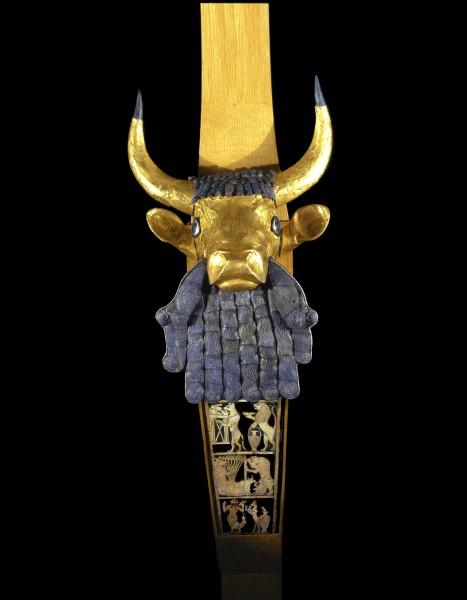
- Date: 2550 – 2450 BCE.
- Place of origin: Royal Cemetery of Ur.
- Detailed Description: A partially restored lyre richly decorated with precious metals and panels depicting animals acting like humans and a golden bull’s head.
- Historical Value: The lyre itself is among the oldest stringed instruments found by archeologists (With Art Philadelphia, n.d.). It is decorated with gold and lapis lazuli. The lyre was likely used in important ceremonies.
The most recognized part of the lyre is the bull’s head. Most likely, it represents Shamash, a powerful god. In addition, the bull is commonly considered an aggressive and powerful animal. Beard further enhances the impression. A man holding onto the bull’s horns symbolizes the challenge of power.
Ancient Aegean
Queen’s Megaron
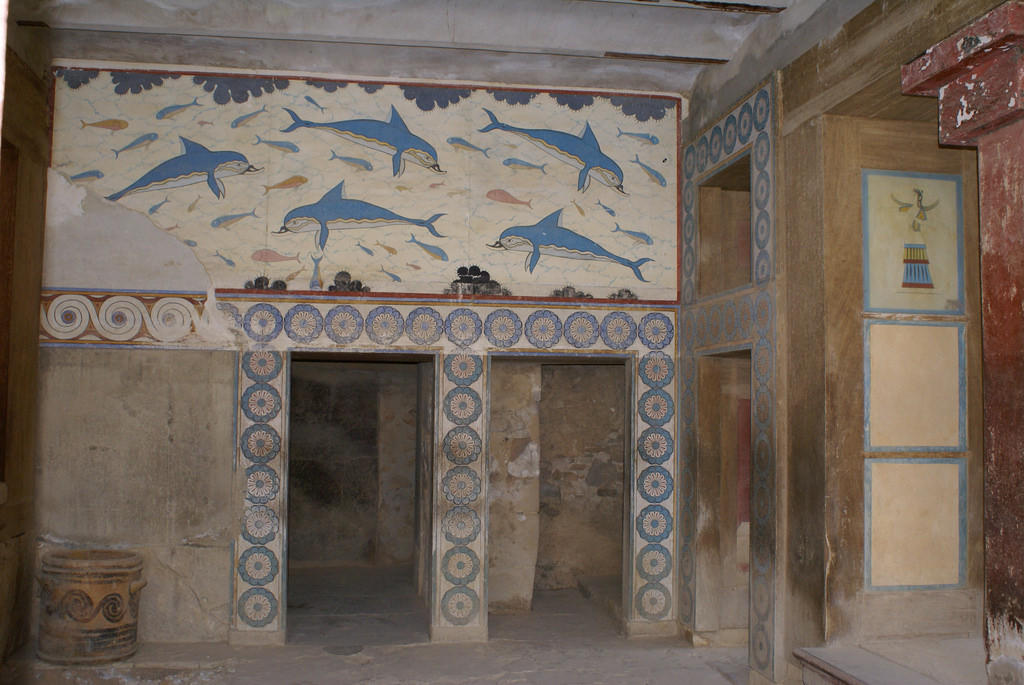
- Date: 1500 BCE.
- Place of origin: Knossos.
- Detailed Description: The royal apartments from the Palace of Knossos containing several prominent frescoes.
- Historical Value: The chamber contains several important elements. A clay bath and lavatory can be found in the Western part. A metal furnace is located in the South. These artifacts illustrate outstanding architectural prowess.
The frescoes in the chamber utilize harmonious motifs. The dolphins are traditionally viewed as peaceful creatures. The even distribution of objects creates an impression of motion. The color palette is calming and aesthetically appealing. The concentric circles and spirals further enhance the impression.
Male Harp Player
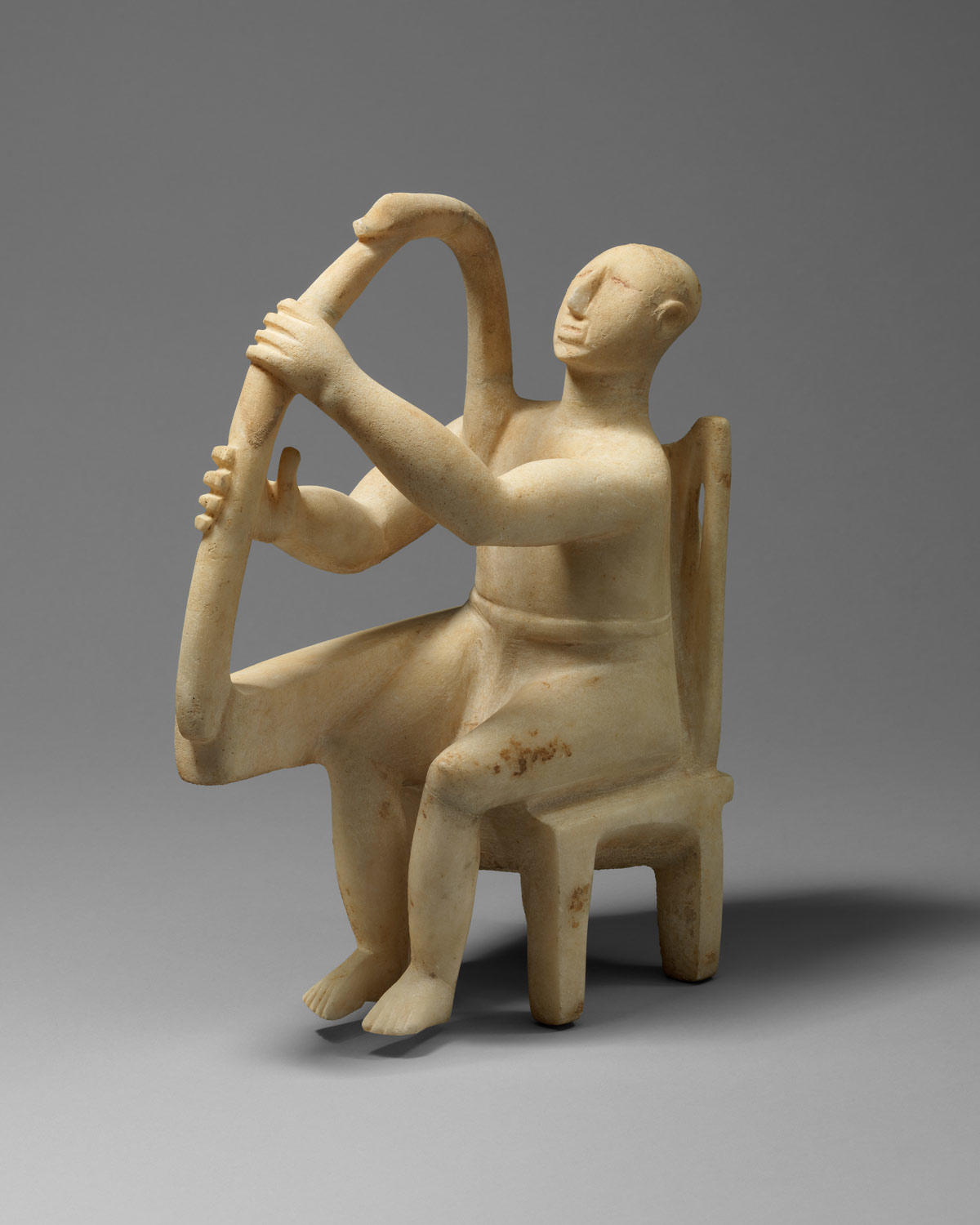
- Date: 2800 – 2700 BCE.
- Place of origin: Keros.
- Detailed Description: A marble statue depicting a musician with a harp seated on a high chair.
- Historical Value: The piece is representative of an early Aegean period. The exact meaning of the artifact is unknown. It may have ritualistic meaning since similar statues were buried with deceased individuals (The Metropolitan Museum, n.d.).
The central theme of the piece is peaceful in nature. Playing a musical instrument is considered soothing and non-violent. The facial expression of the player is also calm and serene. All the lines are soft and rounded.
Ship Procession Fresco

- Date: 2000 – 1500 BCE.
- Place of origin: Thera.
- Detailed Description: The fresco depicts a long procession of ships cruising between two cities.
- Historical Value: The fresco is one of the most recognizable examples of ancient Aegean art. It provides knowledge of the techniques used by the ancient Greek artists. The placement of frescoes also provides insights into the social structure (Cartwright, 2014).
The ships in the fresco are decorated, suggesting their peaceful purpose. The cities on both sides indicate prosperity and harmony. The entire composition is indicative of trading activity. This theme is also associated with development and proliferation rather than conflict.
References
Cartwright, M. (2014). Akrotiri frescoes. Web.
The Metropolitan Museum. (n.d.). Marble seated harp player. Web.
With Art Philadelphia. (n.d.). Lyre with bearded bull’s head and inlaid panel. Web.